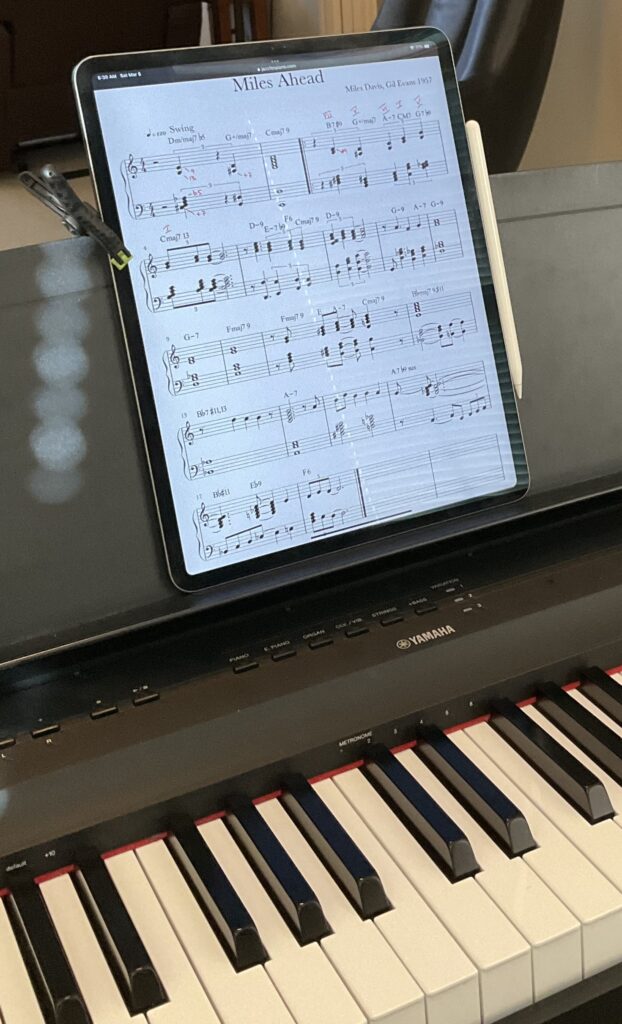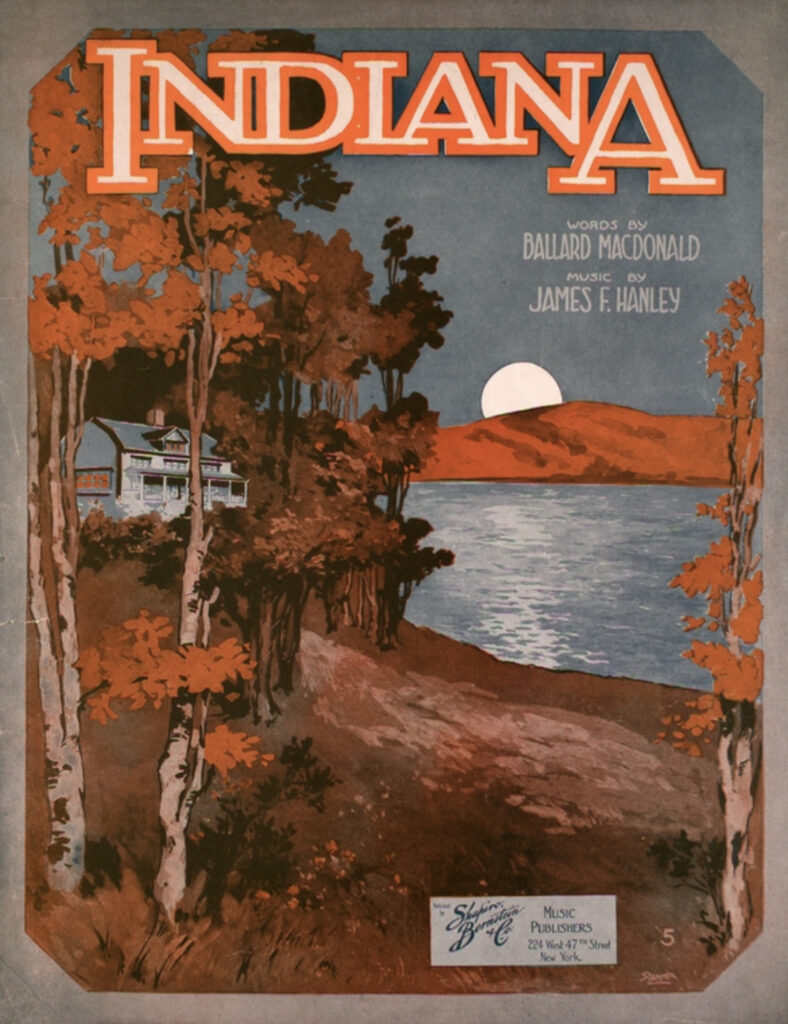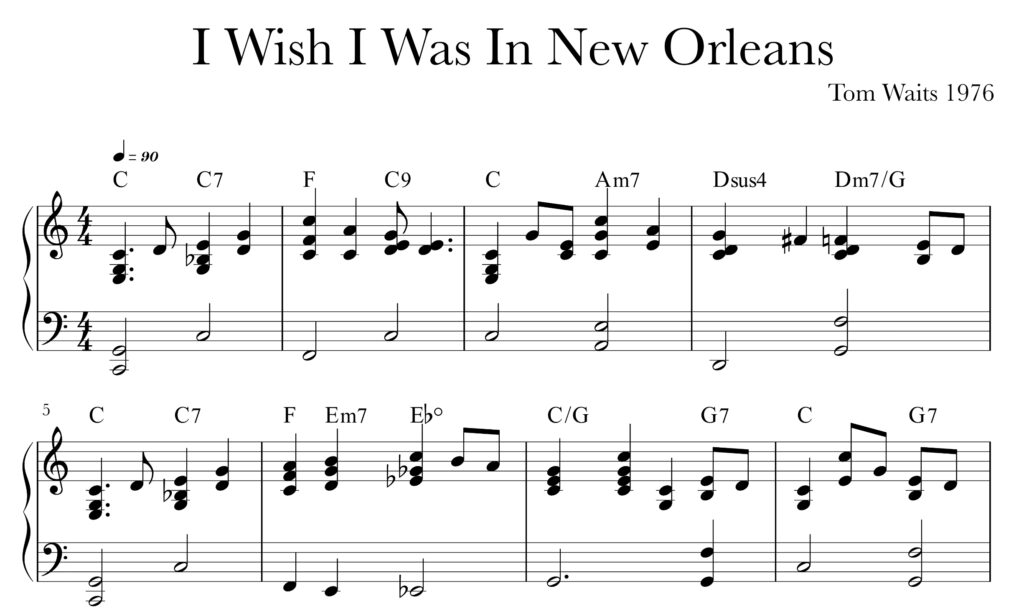Jazz for Piano - Getting Started
First off, a few suggestions on organizing your music and using this site:
(1) Everything on this site was pulled together on an iPad. The ability to freely move all your music between the desk, the piano and the gig is very efficient.
(2) All the music on this site was created on the Notion app by PreSonus. It’s free and pretty easy to use.
(3) The Goodnotes app is great for compiling and storing all your music and notes. Tip – take a screenshot of anything on web. Dump it into Goodnotes and convert it into a PDF for filing or printing.
(4) The Apple Pencil or equivalent is great for marking up a score with analysis, fingering or reminders.
The transcriptions on this site are meant to help you achieve a “sound”. As soon as possible distill the tunes to a lead sheet or better yet memory.

If you are just getting started playing Jazz, or maybe you feel like you’re stuck in a rut, this page should give you a few ideas to get those creative juices flowing.
Any approach to learning to play a type of music should take into account where the student is coming from and where it is they want to go. That said, there are a few skills that are indispensable for creative musicians and improvisers to master:
Intervals
The ability to recognize and reproduce any interval at will is the holy grail for creative musicians. Being able to play what you hear is the essence of improvisation.
Example 1 shows all possible intervals and how they relate to each other by inversion. On our page “Intervals” (Link) we touch on how these intervals have traditionally been perceived (consonant and dissonant).

We have a few games you can use to get these intervals implanted on the brain:
Game 1 - Interval of the Week
Pick an interval and move it around the keyboard. Example 2 shows some ideas when playing with the Major third. The goal is to get the interval implanted on the ear and the fingers.

Game 2 - Finish the Phrase
(1) Play four random notes without looking or thinking. (2) Pause and imagine a way to continue the phrase. (3) Try to finish the phrase the way you imagined it. (4) Review what you played analyzing the intervals you used. (5) Pick another random note and try to repeat the phrase from there.
Tip: If you happen to have $100 burning a hole in your pocket buy yourself a mini keyboard (I have a Yamaha PSS-A50). Getting away from your regular piano has all sorts of advantages. Sit on the couch or take it outside to play these games, memorize licks or work out some fingering.
Game 3 - Guess the Intervals
When you hear a phrase you love try and guess the intervals before you transcribe it. You will get better and better the more you try. Example 3 moves down +3, +3, +3, up a tritone, down aug5, up 5, up 1, up 1/2.

Progressions
Being able to recognize, play and memorize different chord progressions is another essential skill. We spend a great deal of time exploring different progressions as we work through “Our Analysis” (Link) but it is worth having one particular type of progression under your fingers right from the start:
Example 3 shows us the “Cycle of Fifths” (clockwise) or “Cycle of Fourths” (counter-clockwise). If our tonic is ‘C’ a very common progression approaches that tonic by intervals of a 4th.
By far, the most common part of this progression is the final II-V-I. Recognizing and being able to play the II-V-I in any key is a good skill to have.


Tip: working on the whole cycle is pretty tedious. Concentrate on the left hand side to start with, particularly Ab, Eb, Bb, F and C. I would guess that well over 60% of the songs you’re going to encounter will be in one of these keys.
Roots
The last of our three ways to get started is to become familiar with the three main Foundations of Jazz – Blues, Gospel and Americana:
Blues
We all know that the blues is foundational for most styles of “popular” music, rock, reggae, r&b, rap and, of course, jazz. What is it about the blues that makes it so useful and adaptable? Follow the link to look at some rudimentary forms of blues music and how it can help you master the language of Jazz:
Gospel
Gospel music has also been deeply influential on Jazz, particularly jazz rhythm. Check out the link.
Tip: there are all sorts of websites with original transcriptions of hymns. Pick out a few, label the chords and work on giving it some “pulse” (Link). You might want to start with songs like ‘As the Deer’, ‘Deep River’, ‘Take My Hand’ and ‘Near the Cross’.
Americana
Our last category of Roots music can loosely be called “Americana”. These are the songs your great-grandmother (great-great-grandmother?!!) might have stored in her piano bench. Put some history in your pocket by grounding your playing in the tradition.
Back Home Again In Indiana 1917 (Link)
I’m Crazy ‘Bout Your Lovin’ 1919 (Link)
There is another entry point to Americana and that is through the contemporary music of people like Randy Newman (Good Old Boys) and Tom Waits (Small Change):


